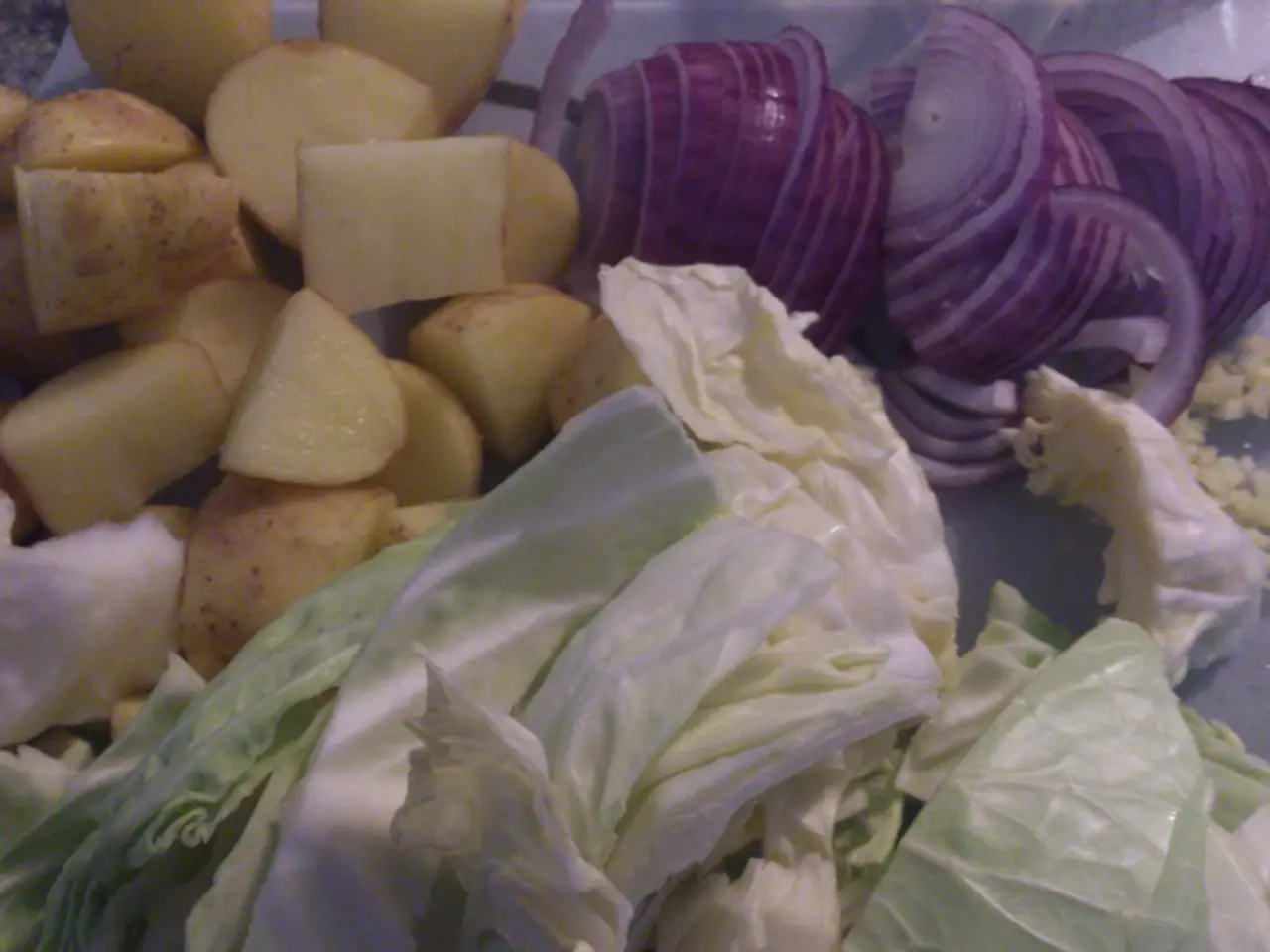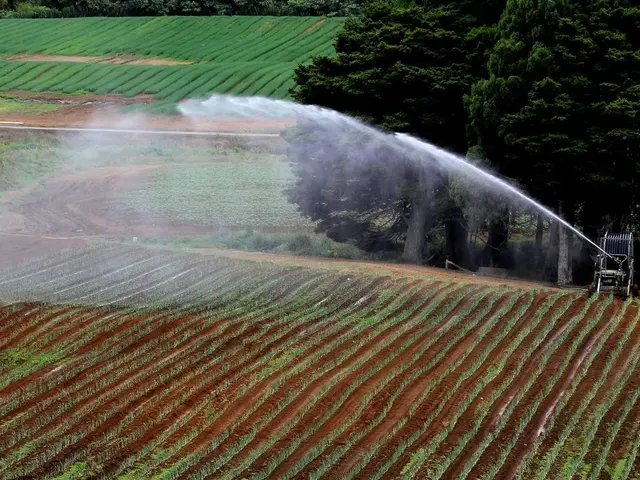Strategies for Cultivating Winter Produce: A Guide
In the heart of winter, a bountiful garden is not just a distant dream, but a reality for many gardeners who have embraced the art of growing winter vegetables. This guide offers a comprehensive approach to cultivating a thriving winter vegetable garden, maximising yield and crop health during the colder months.
The selection of suitable varieties is crucial. Broccoli thrives in cold weather, with heads harvested while tight and compact, and side heads continuing to grow post-harvest. Cabbage prefers full sun and well-drained soil enriched with organic fertiliser, while cauliflower needs full sun, deep nutrient-rich soil, and protection from frost and sun to prevent discoloration. Brussels sprouts benefit from frosty winters, good drainage, and sunlight, and leeks can be planted in autumn and winter, maturing as temperatures rise. Winter herbs such as chives, dill, parsley, chervil, rosemary, thyme, and mint also do well in winter gardens.
Sowing times and techniques require careful consideration. Seeds should be sown mid-summer to early autumn for winter crops, but soil moisture and temperature must be managed carefully, as warm soil can hinder germination of some crops like spinach and lettuce. Shade cloths or floating row covers can keep soil cool and moist for successful germination, and starting seeds indoors or pre-sprouting can improve success rates. Watering tender seedlings frequently until established is essential, and protection from early frosts can be provided using clear plastic bottles or milk jugs cut at the bottom, or fleece blankets.
Successional sowing is another essential strategy for extending harvest periods. By sowing lettuce or spinach every few weeks, a continuous supply can be ensured. Crop rotations, including cover crops like hairy vetch, Austrian winter peas, and crimson clover, can improve soil fertility and health for the next crop. Mixing grasses and legumes in cover crops (2:1 ratio or up to 1:1 legumes) helps retain nitrogen for subsequent crops.
Protecting crops from frost, insects, and disease is vital for a successful winter harvest. Frost-sensitive crops can be protected using insulation materials like plastic cloches or fleece, and cauliflower heads can be wrapped with outer leaves to prevent sun damage. Watering at the base to avoid wetting leaves, which can cause disease, is also recommended. Monitoring for pests such as cabbage white caterpillars and taking appropriate control measures is essential.
Space-saving planting strategies are key to making the most of limited garden space. Planting crops according to height and light needs, using dense planting or interplanting winter herbs with vegetables, and employing permaculture principles can maximise space utilisation. Succession planting also helps use bed space efficiently over the season.
In harsh climates, a polytunnel can help protect crops and extend the growing season, making it possible to harvest new leaves such as kale, chard, spinach, and salads. Lettuce seeds can be sown successionally for a continuous harvest, and a polytunnel offers a sheltered environment for winter gardening, protecting plants from wind and rain.
Discover the best varieties of winter vegetables, choosing those that can cope with winter and make new growth. Winter vegetables, such as onions and parsnips, should be sown in March for a winter harvest, and the top winter leek for hardiness is called 'Bandit'. Plant salad plants and leeks close together for space-saving in winter harvests, with corn salad growing as close as 7cm apart and other salad plants at 15cm. Successional sowing can add three or four weeks to the growing season, ensuring a plentiful supply of fresh, homegrown vegetables even in the depths of winter.
References: [1] The Guardian, 2021, Growing winter vegetables: a guide to the best varieties and methods. [Online] Available at: https://www.theguardian.com/lifeandstyle/gardening-blog/2021/jan/08/growing-winter-vegetables-a-guide-to-the-best-varieties-and-methods [2] RHS, 2021, Winter vegetable growing guide. [Online] Available at: https://www.rhs.org.uk/advice/profile?PID=287 [3] BBC Gardeners' World, 2021, Winter vegetables: how to grow your own. [Online] Available at: https://www.bbc.co.uk/gardening/howtoadvice/plants/winter_vegetables [4] The Spruce, 2021, How to Grow Winter Vegetables in Cold Climates. [Online] Available at: https://homeguides.sfgate.com/grow-winter-vegetables-cold-climates-84581.html
- In addition to winter vegetables, one can grow a variety of healthy-cooking herbs like chives, dill, parsley, chervil, rosemary, thyme, and mint in a winter garden, enhancing the food-and-drink lifestyle.
- Gardeners can extend the harvest periods by practising successional sowing, ensuring a continuous supply of lettuce or spinach over the colder months, making the home-and-garden lifestyle more sustainable and productive.
- For those facing harsh climates, a polytunnel can be a valuable asset, protecting crops like kale, chard, spinach, and salads, thus extending the food-and-drink possibilities throughout the winter season, fostering a healthy-cooking lifestyle.




